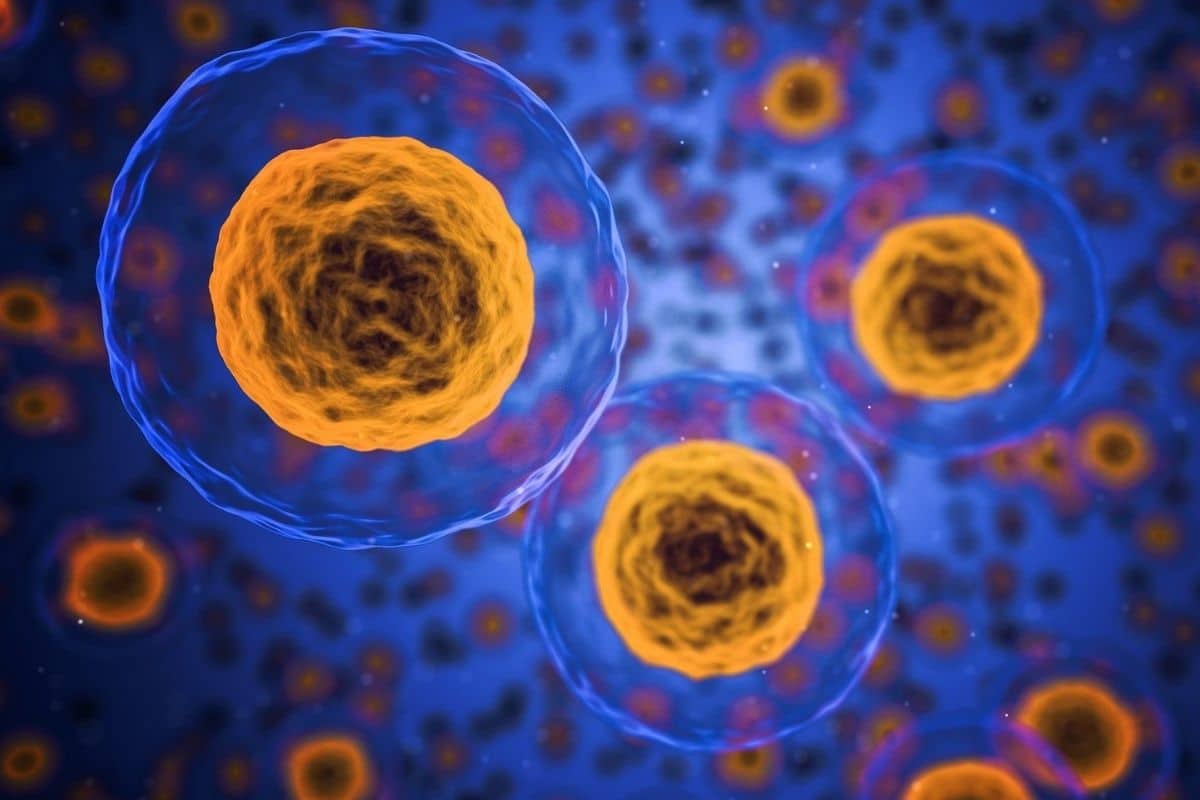
The previously unknown cells are located deep in the human lungs and may well play a key role in the treatment of several lung diseases.
You would say that by now we have a pretty good picture of our own body. Yet even the human body appears to have surprises in store for us. Researchers are in a new study namely encountered an as yet unknown cell type. And this new cell type could potentially be a first important step in the cure of certain lung diseases.
Lungs
Researchers found the brand new cell type deep in the human lungs. The cells, used by the team ‘respiratory airway secretory cells’ (RAS) reside in delicate ramifications of the human lungs, near the alveoli where oxygen is exchanged for carbon dioxide. The newly discovered RAS cells appear to have stem cell-like properties, allowing them to regenerate other cells essential for normal alveoli function.

The newly discovered cell type. Image: University of Pennsylvania
The latter is particularly interesting. Because the researchers discovered that the RAS cells play an important role in keeping the alveoli healthy. In addition, cigarette smoking can disrupt the regenerative functions of the RAS cells. According to the team, this indicates that rectifying this disruption may be a promising way to treat the smoking-related lung disease COPD.
Cellular Biology
It means that the newly discovered cell type may just play a key role in the treatment of several lung diseases. “COPD is a devastating and common disease,” said researcher Maria Basil. “Still, we don’t fully understand cellular biology yet. Moreover, we do not understand why or how some patients get this disease. Identifying new cell types, especially new progenitor cells involved in COPD, could really accelerate the development of new treatments.”
COPD, also called smoker’s lung, is an abbreviation of the English term chronic obstructive pulmonary disease. It is a chronic obstructive pulmonary disease, characterized by a loss of alveoli and a persistent ‘narrowing’ in the lungs. COPD is also a collective name for the lung disorders chronic bronchitis and emphysema. About 329,000 people live with COPD in the Netherlands. Every year, more than 35,000 new patients are diagnosed with COPD. COPD cannot be cured, the disease process can currently only be slowed down.
Researchers tracked down the new cell type when they examined human lung tissue taken from healthy human donors. Normally, the lungs of mice are often taken as a model for human lungs. However, mouse lungs lack the key features of human lungs. And so it is highly questionable to what extent the lungs of mice actually create a good picture.
Differ
Because of these crucial differences, researchers have been unable to fill some important gaps in our understanding of the human lungs. To better understand these differences at the cellular level, the researchers in the current study decided to focus on human lung tissue. When they tracked down the RAS cells, they quickly recognized that these cells cannot be found in mouse lungs and were also unknown to science.
Incidentally, it is not the first time that scientists have come across cells and organs in the human body that are still unnoticed. For example, late last year, a study revealed previously unknown cell components. In total, the researchers found about 70 components in a human kidney cell, half of which had never been seen before. And that means cells are home to dozens of parts we don’t know yet. In addition, in 2018, scientists even discovered a completely new human ‘organ’. This new ‘organ’ is located just below the surface of the skin, surrounding the digestive tract, lungs, urinary tract and surrounding vessels, veins and the connective tissue between muscles. It was long thought to be dense, connective tissues. In reality, however, they turn out to be fluid-filled compartments that, moreover, are in communication with each other.
Overall, the new findings are promising and offer some perspective for COPD patients. “With these kinds of studies, we’re starting to get a sense of what’s really happening in this common disease at the cell biological level,” said study researcher Edward Morrisey. “More research is needed. But the results point to the possibility of future COPD treatments, where the RAS cells are either repaired or replenished in damaged lungs.”
Source material:
†Penn Researchers Discover New Cell Type in Human Lung with Regenerative Properties” – University of Pennsylvania
Image at the top of this article: Arek Socha via Pixabay